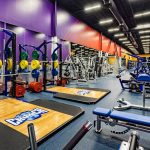Head N.V. posted third quarter net income that was nearly three times the year-ago level, due primarily to the divesture of a tennis ball manufacturing facility in Ireland. The increase in operating profits and the bottom line was also attributed to the upside the company is starting to see from its restructuring efforts.
Head, which is based in Austria, still saw some top-line upside to their practice of listing the company in the U.S. and reporting in U.S. dollars, but also saw some margin pressure on goods made in Europe.
In a conference call with analysts company management indicated that they are doing a cost benefit analysis of continuing to list in the U.S as the costs of complying with Sarbanes-Oxley start to outweigh any perceived benefits.
Head looked to Europe for roughly 61% of revenues generated in Q3, up from 58% of the business in the year-ago quarter and 54% of sales in Q3 2002. The increase came from foreign currency exchange benefits as well as improving Winter Sports sales. North America held steady at 29% of the business in Q3, but was down 300 basis points from two years ago.
Measured in the home regions Euro currency, Heads third quarter sales would have actually declined 3.1% versus the 5.2% increase reported. European sales rose just 1.9% in Euros versus the reported 10.7% increase reported in U.S. currency. The total company sales decline comes on top of a 3.1% decline in revenues in Euro terms last year.
Winter Sports, which made up 56% of total sales in Q3 versus 51% of sales in the year-ago period, still gets 90% of its sales in the back half of the year. Management said the sales increase in the period was due in large part to FX rate benefits as well as higher sales volumes and bindings prices and an “improved mix” in ski and ski boot sales.
The shift in mix was clear as unit sales in bindings, including contract manufacturing, increased roughly 31% versus last year to 590,000 pairs, while boot unit sales declined 2.5% to approximately 158,000 pairs and skis dipped nearly 2% to 176,000 pair shipped in the period.
Snowboard shipments, which were said to have been impacted by a shift in timing, fell 33% to just 69,000 units in third quarter.
In the reporting U.S. Dollar terms, sales of Skis increased approximately 9% to about $26 million in the period. Bindings sales jumped 34% to $24 million and Boots sales increased 15% to roughly $14 million.
Snowboard sales fell 20% to just under $5 million.
Skis made up 38% of sales in Q3, down for 40% of sales in Q3 last year. Bindings are now 35% of the business versus 30% in Q3 last year, while Boots remained steady at 20% of the Winter Sports business. Snowboards declined to 7% of sales from 10% in 2003.
Europe, which made up 76% of Winter Sports sales in Q3 versus 71% of sales in Q3 last year, saw Winter Sports sales increase nearly 23% in the third quarter. In Euro terms, sales in the region increased about 13%, while the Rest of World numbers fell 52% measured in Euros.
Gross margins in the Winter Sports division dipped 20 basis points from Q3 last year to 41.5% of sales in Q3 2004, due in large part to a change in the product mix in the division again this year and also the negative currency impact of costs that are largely incurred in Euros. Head is now selling more OEM bindings and higher margin skis make up a smaller piece of the mix.
Racquet Sports sales decreased across all categories, with the largest declines which coming out of Europe. Head said they expected to see some decline in Racket sales as they had to anniversary the successful LiquidMetal launch last year. They also pointed to increased price pressure in the racket market and reduced OEM business after the closure of the Irish ball factory.
While the Rest of World region still posted a decent double-digit sales gain for the period, North America sales dipped 2.2% and Europe saw revenues in Racquet Sports fall 17.6% in the third quarter. In Euro terms, Racquet Sports sales in the region fell almost 24% to approximately 11.5 mm for the period.
On a dollar basis, North America now makes up about 49% of Heads Racquet Sports business, up from 47% in Q3 last year. Europe was 36% of sales, down from 41% in the year-ago period.
Head sold 436,000 tennis racquets in Q3, down nearly 3% from the year-ago period. Racquets represented 53% of sales for the division, while Balls make up 33% of sales, trading about one percentage point of share versus last year. Ball sales were down almost 7% to 1.58 million dozen.
Head said gross margins here improved 60 basis points to 38.1% of sales, due in large part to sales of LiquidMetal rackets as well as “other restructuring projects” underway.
The Diving division, which sees 85% of its business coming from the Mares brand, saw sales dip in both the North America and Europe markets. Europes share of the Head Diving business held steady at about 58% of sales and North America contributed 26% of division sales. Dacor made up 10% of sales and Spora provided about 5% of revenues.
The inventory position was said to be up about $5 million in constant currencies, due to higher levels of bindings, snowboards and Penn tennis balls.
The gain from the sale of the facility in Ireland was recorded in the quarter, helping push G&A down 65.8% to $3.4 million from $9.8 million in the comparable 2003 period. Due to the gain here and other charges and restructuring expenses, operating income for the quarter increased by $7.6 million to $15.3 million from $7.7 million in the comparable 2003 period.
>>> The benefits to reporting in U.S. dollars starts to lose its luster as the FX rate impact begins to stabilize…














